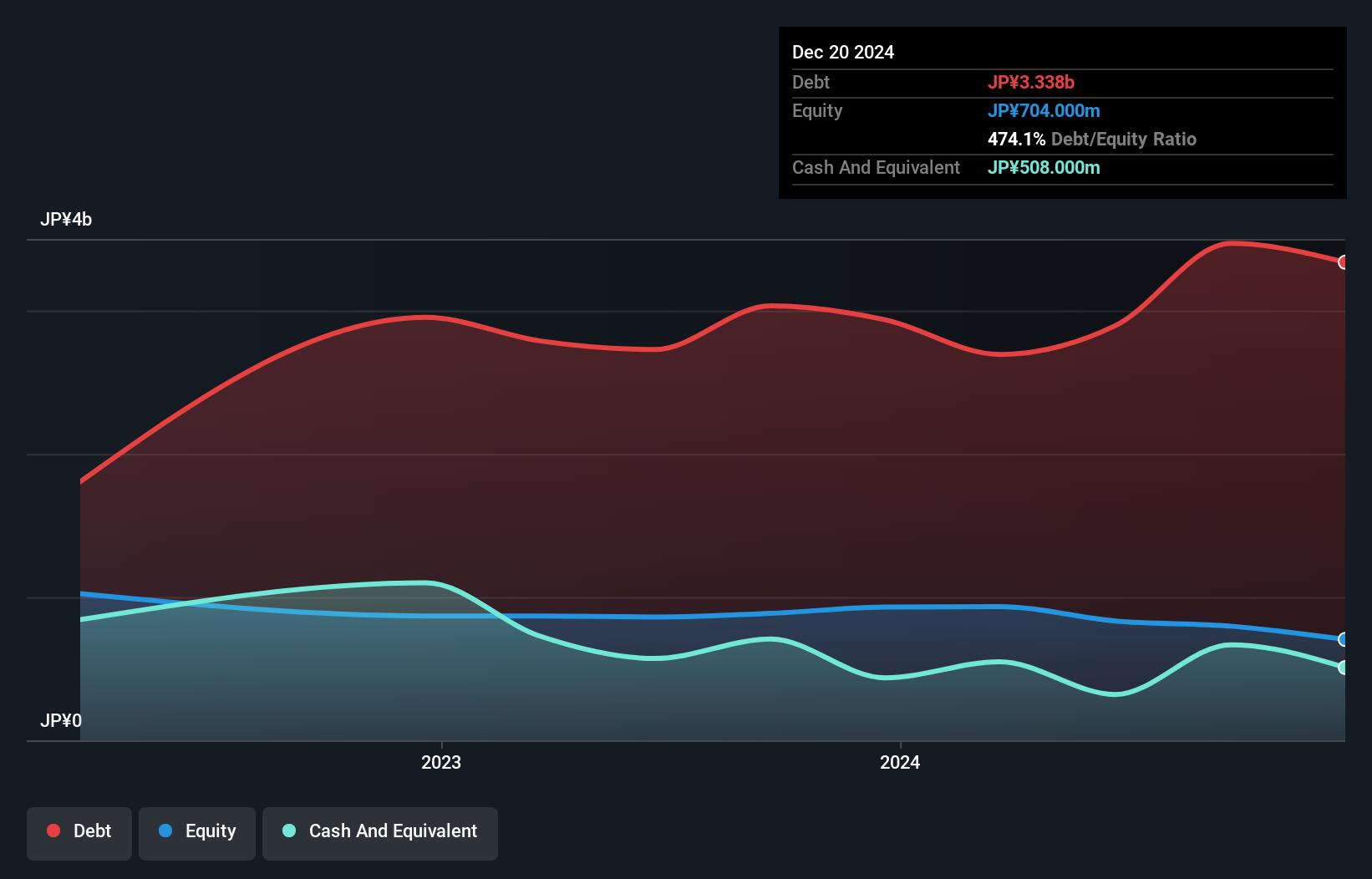
David Iben put it well when he said, 'Volatility is not a risk we care about. What we care about is avoiding the permanent loss of capital.' When we think about how risky a company is, we always like to look at its use of debt, since debt overload can lead to ruin. As with many other companies SEKIDO Co., Ltd. (TSE:9878) makes use of debt. But the real question is whether this debt is making the company risky.
Why Does Debt Bring Risk?
Debt assists a business until the business has trouble paying it off, either with new capital or with free cash flow. In the worst case scenario, a company can go bankrupt if it cannot pay its creditors. However, a more usual (but still expensive) situation is where a company must dilute shareholders at a cheap share price simply to get debt under control. Having said that, the most common situation is where a company manages its debt reasonably well - and to its own advantage. When we think about a company's use of debt, we first look at cash and debt together.
What Is SEKIDO's Debt?
You can click the graphic below for the historical numbers, but it shows that as of December 2024 SEKIDO had JP¥3.34b of debt, an increase on JP¥2.94b, over one year. However, because it has a cash reserve of JP¥508.0m, its net debt is less, at about JP¥2.83b.

A Look At SEKIDO's Liabilities
We can see from the most recent balance sheet that SEKIDO had liabilities of JP¥4.16b falling due within a year, and liabilities of JP¥955.0m due beyond that. Offsetting these obligations, it had cash of JP¥508.0m as well as receivables valued at JP¥755.0m due within 12 months. So its liabilities total JP¥3.85b more than the combination of its cash and short-term receivables.
The deficiency here weighs heavily on the JP¥1.58b company itself, as if a child were struggling under the weight of an enormous back-pack full of books, his sports gear, and a trumpet. So we definitely think shareholders need to watch this one closely. After all, SEKIDO would likely require a major re-capitalisation if it had to pay its creditors today. When analysing debt levels, the balance sheet is the obvious place to start. But you can't view debt in total isolation; since SEKIDO will need earnings to service that debt. So when considering debt, it's definitely worth looking at the earnings trend. Click here for an interactive snapshot.
See our latest analysis for SEKIDO
Over 12 months, SEKIDO made a loss at the EBIT level, and saw its revenue drop to JP¥8.0b, which is a fall of 2.2%. We would much prefer see growth.
Caveat Emptor
Over the last twelve months SEKIDO produced an earnings before interest and tax (EBIT) loss. Indeed, it lost JP¥90m at the EBIT level. When we look at that alongside the significant liabilities, we're not particularly confident about the company. It would need to improve its operations quickly for us to be interested in it. Not least because it had negative free cash flow of JP¥388m over the last twelve months. So suffice it to say we consider the stock to be risky. The balance sheet is clearly the area to focus on when you are analysing debt. However, not all investment risk resides within the balance sheet - far from it. Be aware that SEKIDO is showing 3 warning signs in our investment analysis , and 2 of those are a bit unpleasant...
When all is said and done, sometimes its easier to focus on companies that don't even need debt. Readers can access a list of growth stocks with zero net debt 100% free, right now.
New: Manage All Your Stock Portfolios in One Place
We've created the ultimate portfolio companion for stock investors, and it's free.
• Connect an unlimited number of Portfolios and see your total in one currency
• Be alerted to new Warning Signs or Risks via email or mobile
• Track the Fair Value of your stocks
Have feedback on this article? Concerned about the content? Get in touch with us directly. Alternatively, email editorial-team (at) simplywallst.com.
This article by Simply Wall St is general in nature. We provide commentary based on historical data and analyst forecasts only using an unbiased methodology and our articles are not intended to be financial advice. It does not constitute a recommendation to buy or sell any stock, and does not take account of your objectives, or your financial situation. We aim to bring you long-term focused analysis driven by fundamental data. Note that our analysis may not factor in the latest price-sensitive company announcements or qualitative material. Simply Wall St has no position in any stocks mentioned.
About TSE:9878
Low and slightly overvalued.
Market Insights
Community Narratives


